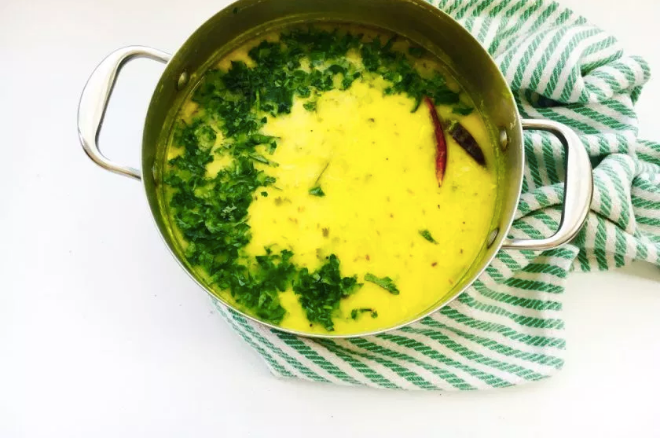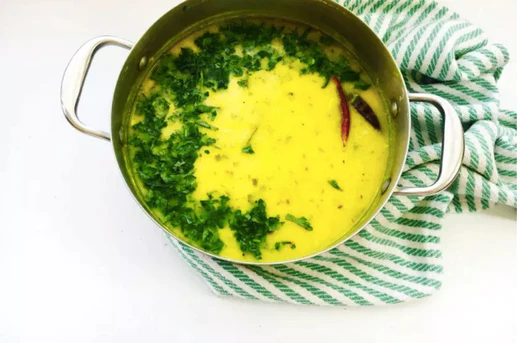Ghee-licious Moong Dal

This site has limited support for your browser. We recommend switching to Edge, Chrome, Safari, or Firefox.
FREE shipping on orders of $50 or moreFREE shipping will be applied at checkout
Spend $50 more for FREE shipping!FREE shipping will be applied at checkout
Sorry, looks like we don't have enough of this product.



This recipe for a simple Moong Dal comes to us from our friend Rumin Jehangir, founder of chit.chaat.chai, a holistic living and wellness site inspired by Ayurveda.
A simple dal is a staple of the weeknight cooking routine in our house. We almost always have the ingredients we need on hand to make it, and it provides that rare combination of flavorful, comforting and healthy.
This basic recipe is not too spicy or hot. It includes a smidge of asafoetida powder, an ingredient that is essential to Indian cuisine. Asafoetida powder is derived from a plant resin. In its raw form it has an extremely pungent odor. When cooked, asafoetida transforms into a delicious garlic-onion flavor. It is a natural umami-booster.
The recipe also calls for curry leaves (optional), which in the Bay Area can sometimes be found at Lakeshore Produce, Farmer Joe's or Berkeley Bowl.
1/2 teaspoon brown mustard seeds
1/4 teaspoon asafoetida
1 1/4 teaspoon cumin seeds
1 teaspoon turmeric powder
1/2 fresh serrano chile, sliced or 1-2 dried red chiles or 1/4 tsp Kashmiri chili powder (optional)
1 teaspoon Himalayan pink salt
The total time ranges from 30-40 minutes. If you live in high altitude, times may differ—consider using a pressure cooker to cook the lentils first. If you prefer a really smooth daal, once the lentils are cooked and the foam has been removed, blend the daal with a hand blender.
*This recipe is for a dal on the thinner side, like the consistency of a soup. If you prefer a thicker dal, reduce water (you can always add more water).



